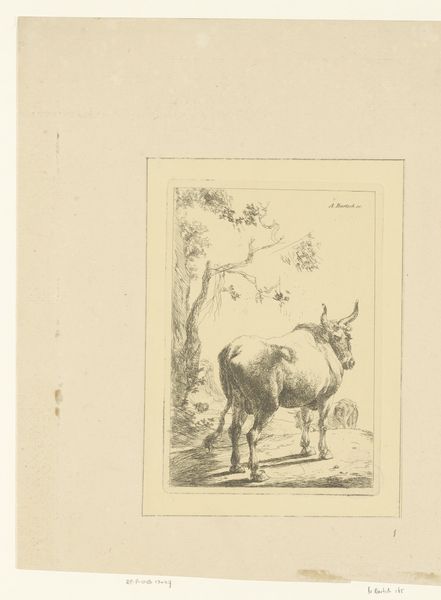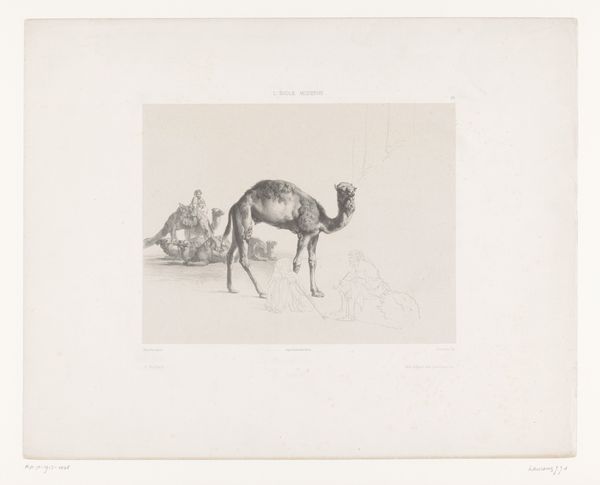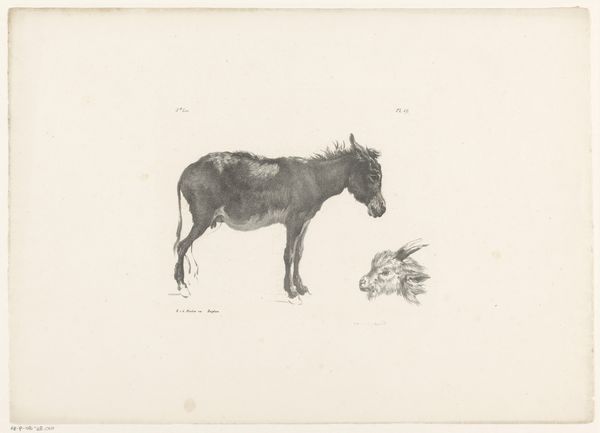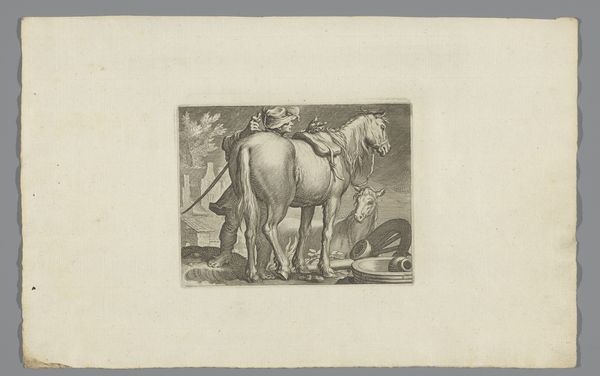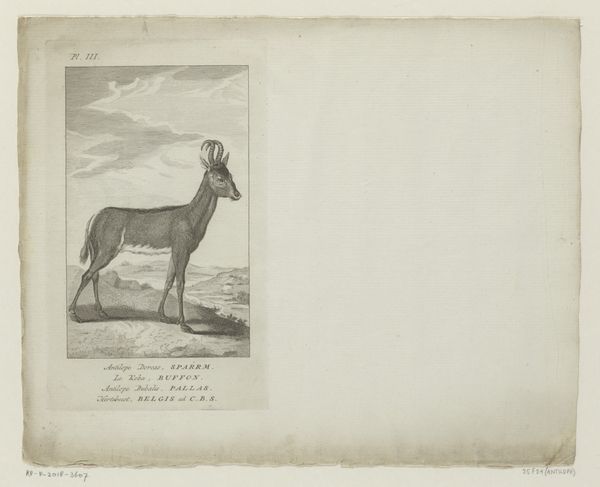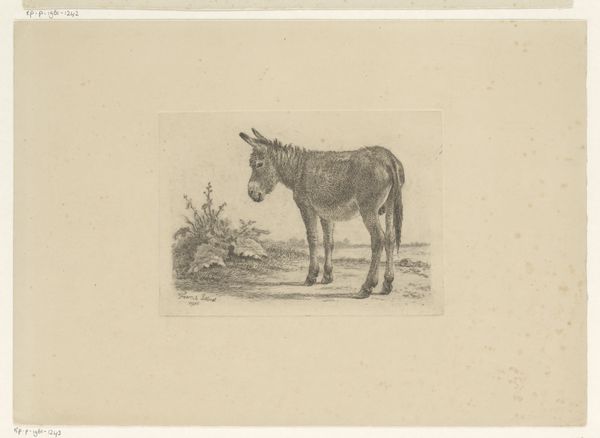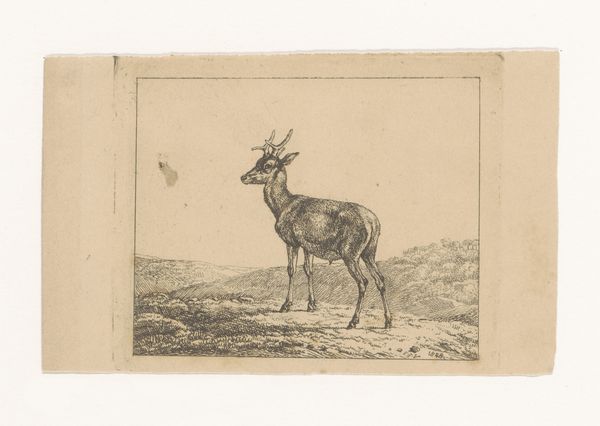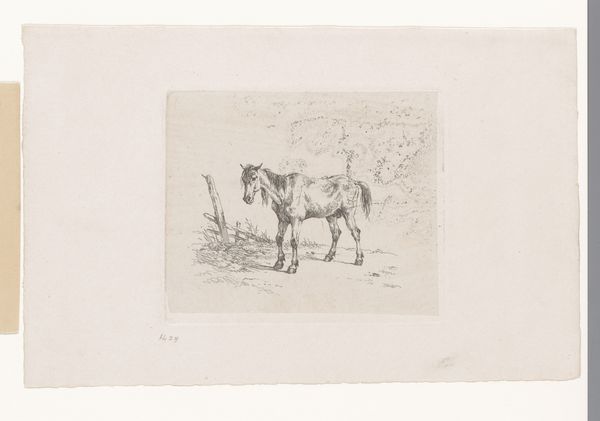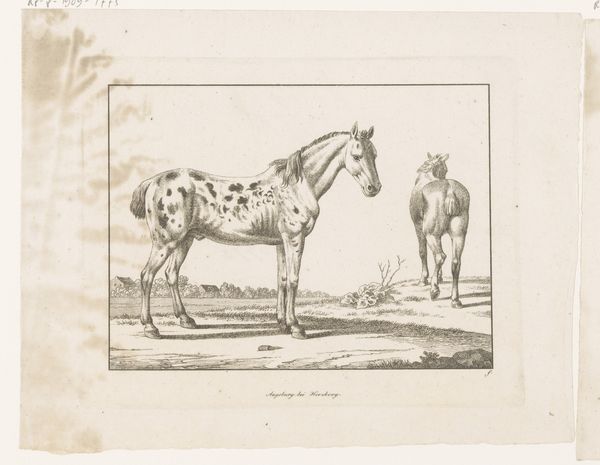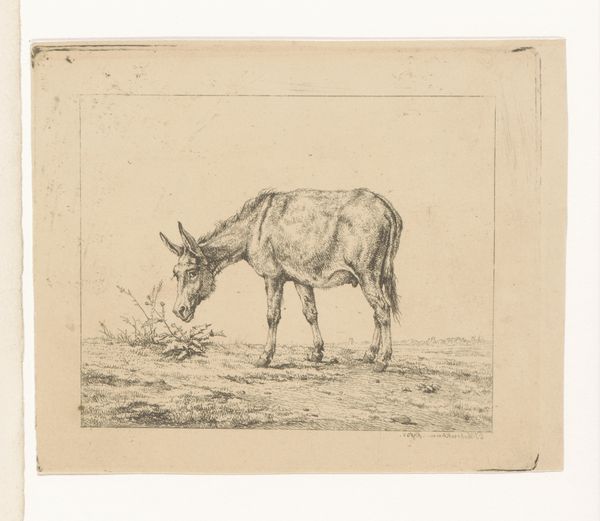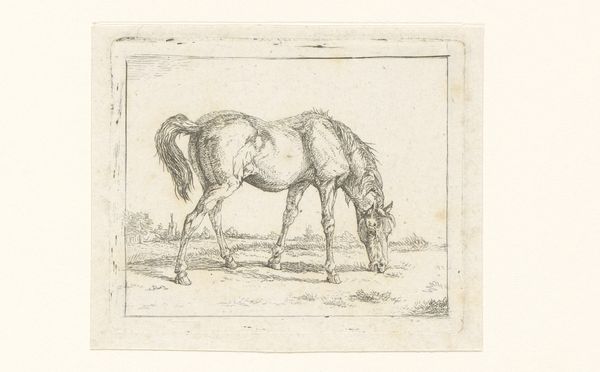
drawing, print, etching
#
portrait
#
pencil drawn
#
drawing
#
amateur sketch
#
light pencil work
# print
#
etching
#
book
#
pencil sketch
#
hand drawn type
#
personal sketchbook
#
sketchwork
#
geometric
#
sketchbook drawing
#
pencil work
#
sketchbook art
Dimensions: height 93 mm, width 78 mm, height 148 mm, width 130 mm
Copyright: Rijks Museum: Open Domain
Curator: This intriguing print is an "Ex libris van Kornél Révész," dating back to 1931. The etching presents a rather peculiar composition, doesn't it? What catches your eye first? Editor: Immediately, it's the contrast. There is such humility from the kneeling figure but next to such stoicism of the camel. The monochromatic palette definitely adds to the sense of old world academia and contemplative reverence. Curator: Indeed. It's meant as a bookplate, a personalized ownership mark. Think about the socio-cultural context in the 1930s. Book ownership reflected intellectual and economic status, making an 'Ex Libris' not just a label, but a statement. This design, a kneeling figure seemingly offering respect to the camel beneath an ornamental fixture. Editor: The subservience implied here does make me question the politics of the imagery. What does it say about the relationship between knowledge, power, and those who pursue it? It's fascinating and, honestly, a little disturbing to see this dynamic depicted so plainly, as if deference is a necessary component of scholarship. Curator: You bring up an important point about power dynamics. Camels, throughout history and across many cultures, have symbolized endurance, trade, even wealth. Their symbolic connection to "the orient" can even tie this piece back to Europe's legacy of colonialism. Placing that symbol over a kneeling figure... I mean that carries weight! Editor: The "orientalism" you mentioned hits the nail right on the head! If you want my honest opinion? There's also a definite class consciousness at play here. Are we, as viewers and possessors of knowledge, implicated in a system where others must kneel to attain what we have? Curator: That's the real genius of the work I feel. It's accessible to the individual, yet deeply connected to much wider ideological and historical forces, making something simple become complex. Editor: It seems there’s always a lingering question about complicity in artwork; that the works mirror our own selves back to us. Maybe that says the most about history itself. Curator: Perhaps we find what we seek. Either way, I agree it’s a poignant piece that lingers in the mind.
Comments
No comments
Be the first to comment and join the conversation on the ultimate creative platform.
